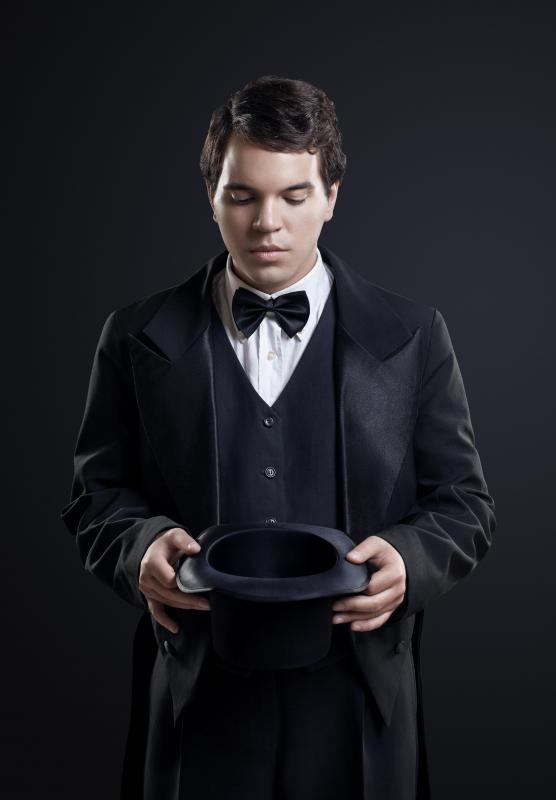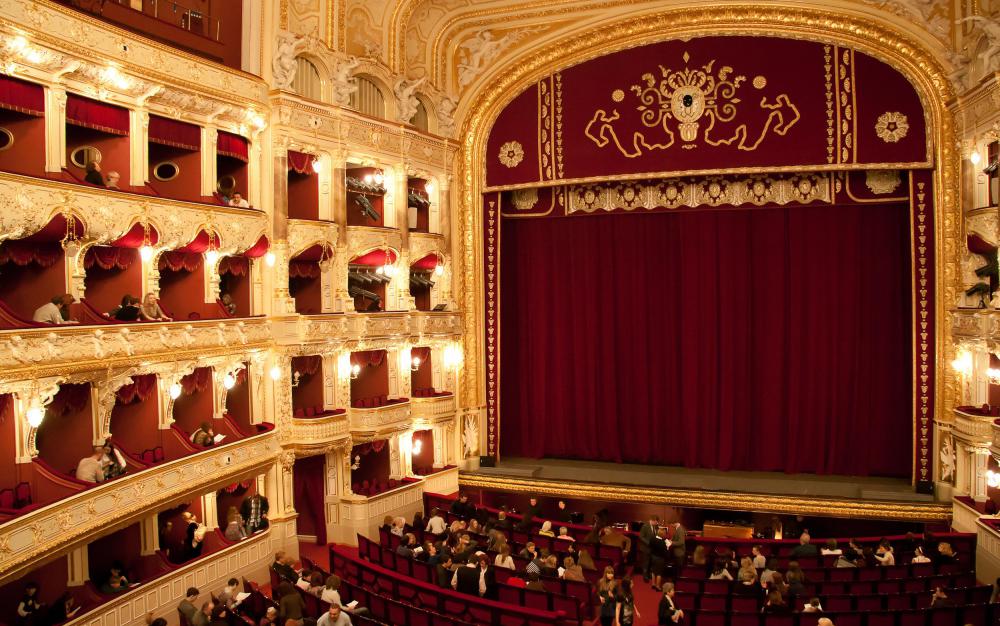At WiseGEEK, we're committed to delivering accurate, trustworthy information. Our expert-authored content is rigorously fact-checked and sourced from credible authorities. Discover how we uphold the highest standards in providing you with reliable knowledge.
What is an Opera Hat?
An opera hat is a distinct type of top hat which can be collapsed for easy storage. This type of hat is also known as a Gibus, chapeau claque, or chapeau bras. Until it is collapsed, an opera hat looks and functions exactly like any other top hat.
The original top hat was created towards the end of the 18th century and came into fashion during the 19th and early 20th centuries. The first top hat appeared in England and was made from beaver fur, similar to many other hats of the day. The most notable aspect of the hat was its distinct shape, with a wide brim and cylindrical top.

The beaver fur used to cover the hat was replaced with a silk known as “hatter’s plush” around the beginning of the 19th century. Though this material was shunned at first by many who still preferred the beaver fur construction, silk soon became the standard material for top hats. By the mid 19th century, the top hat was a symbol of affluence, reputability, and class.

The appeal of the top hat is its ability to make the wearer appear taller and more imposing. It is usually worn tilted forward and at a very slight angle. Gray top hats can be worn with casual daytime apparel, while the classic black top hat is reserved for evening events and formal occasions.
A top hat was a very common accessory for events such as operas throughout the 19th century. However, the height and size of the hat made it difficult to store in cloak rooms, and such a tall piece of headwear could not be worn in the opera house without obscuring the view of others in attendance. This distinct problem led to the invention of the opera hat.
In 1823, Antoine Gibus devised a solution for top hats worn to the opera. He developed a collapsible opera hat, which operated through use of a small spring. This new style of top hat could be flattened and stored neatly beneath one’s seat at the opera. This hat earned the name chapeau claque from the distinct sound it made when it was collapsed.
The opera hat was often worn in place of a regular top hat for occasions other than the opera as well. It was frequently collapsed and help under a man’s arm until he decided to put it on. This method of carrying the hat earned it another moniker, chapeau bras, which is French for “arm hat.”
Though the top hat saw its greatest surge in popularity during the 19th century, it can still be seen today at some formal events such as weddings. The collapsible version of the hat, however, has fallen out of style nearly completely. A true opera hat is now difficult to find outside of antique shops.
AS FEATURED ON:
AS FEATURED ON:












Discussion Comments
I like this hat. From Ellie
Post your comments